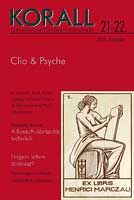Hysteriától a tébolyodottságig. Klára és Emma párhuzamos esettörténete
From hysteria to madness. The parallel case histories of Klára and Emma
Author(s): György KövérSubject(s): History
Published by: KORALL Társadalomtörténeti Egyesület
Keywords: Hungary; social history;19th century; psychiatry; hysteria; women
Summary/Abstract: The paper depicts the lives of daughters of the son of the Viennese wholesaler Izsák Figdor, Michael (1790–1830), who deceased at an early age. Common to their fates is that they both finished their unhappy lives in a lunatic asylum. After judicial interdiction had been placed upon her, the older of the two daughters, the spinster Klára (1823-1888) was first placed in a private institution in Vienna and later to the state asylum in Lower Austria. Thee younger daughter, the married Emma (1828–1900) had been an inhabitant of the state asylum in Lipótmező, Buda, and later on lived in the Schwartzer Sanatorium. In Klára’s case we only have information about the interdiction in 1867 from the documents of the Chancery, while in Emma’s case these may be supplemented by a study of the doctors’ records. The documents contain three diagnoses (hysteria; melancholia; lunacy). The paper follows the diagnosis of these illnesses within the framework of the medical discourse of the age with concrete reference to the case of Klára and Emma. During the description of the cases the following dilemmas of interpretation were encountered: is the fate of the individual whose behavior transcends the borders or ‘normalcy’ defined by the micro-society (the family) that regards such deviation as a medical matter or by the institutions removing the marginalized person from his/her original surroundings (the interdiction) or, rather, is it the continuously changing institutionalized system of medical discourse, which not only gives the illness a name, but also provides an opinion on the chances of the cure based on the diagnosis or decides that the case is hopeless and rules that the patient is to be institutionalized and treated? Last, but not least we have also tried to answer the question whether the use of the mental diagnosis and case history increases or decreases the possibilities of biographical work.
Journal: Korall - Társadalomtörténeti folyóirat
- Issue Year: 2005
- Issue No: 21-22
- Page Range: 68-96
- Page Count: 29
- Language: Hungarian

